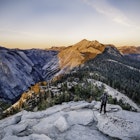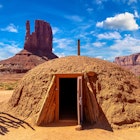
Oct 22, 2025 • 2 min read
Whether you’re already on the road or looking for somewhere to chow down on turkey, here are five National Parks where you can celebrate Thanksgiving.

Oct 22, 2025 • 2 min read
Whether you’re already on the road or looking for somewhere to chow down on turkey, here are five National Parks where you can celebrate Thanksgiving.

Oct 22, 2025 • 5 min read
Creole trail rides offer a glimpse into the history of African American cowboys.

Oct 20, 2025 • 3 min read
Spending hours locked in an airport may seem like a special type of purgatory, but instead make the most of it with these tips.

Oct 15, 2025 • 3 min read
As the United States federal government shutdown continues, here’s what travelers need to know.

Oct 3, 2025 • 14 min read
In a country mad for the open road, Route 66 is the quintessential American road trip. Our full guide covers where, when and how to get the most out of it.

Oct 3, 2025 • 4 min read
In early November, millions memorialize the departed with Día de Muertos. Here are the best US celebrations.

Oct 2, 2025 • 7 min read
Strap on your snowshoes! Here's our pick of the best nature walks and hikes to do this winter in the US.

Sep 29, 2025 • 11 min read
From Naples to Santa Barbara to Sedona, here are all the places to escape the cold in the USA this winter.

Sep 26, 2025 • 5 min read
Some places draw visitors both human and supernatural. Here are eight places all over the USA where you might enjoy a...spirited encounter.

Sep 22, 2025 • 5 min read
Line the streets of major US cities to mark the start of the festive season at these top Thanksgiving parades.

Sep 22, 2025 • 6 min read
Often eclipsed by national parks, state parks offer a wealth of natural beauty in more distinct, quieter settings. Here are some of the best.

Sep 19, 2025 • 6 min read
Halloween is the rare holiday when your costumes and festivities can be both cute and creepy. Here are the top US places to get in on the fun.

Sep 18, 2025 • 8 min read
Whether you’re booking a quiet weekend away or going all out with a big bash, these upscale cabins will have you roughing it in comfort.

Sep 4, 2025 • 9 min read
It's possible to have a sober, or sober curious, trip to wine country in the US. Here are the best places to do it.

Sep 4, 2025 • 6 min read
Want to know where to go to see fall foliage in all its finery? Here are the top leaf-peeping spots in the US for 2025.

Sep 3, 2025 • 7 min read
What captures your imagination more: the scarlet maples of New England or the golden aspens of Colorado? Decide with this side-by-side comparison.

Aug 31, 2025 • 8 min read
There's nothing like fall foliage to bring out those cozy autumn vibes. Here are the best spots in the United States.

Aug 28, 2025 • 6 min read
Fall might be the best time to enjoy the USA’s fabulous national parks. Here are the top 15 parks to visit in autumn.

Aug 24, 2025 • 8 min read
Cool mornings, fewer crowds and lower prices make shoulder season an ideal time to explore.

Aug 18, 2025 • 7 min read
Find out how to show your appreciation and respect for the Navajo, while visiting this fascinating region of the USA.

Jul 30, 2025 • 7 min read
Whether it’s a yoga retreat in the mountains or a spa getaway in the desert, the US is filled with wellness resorts all dedicated to rejuvenation.

Jul 25, 2025 • 5 min read
The USA packs spectacular biodiversity within its borders. Here are the nation's best natural landmarks.